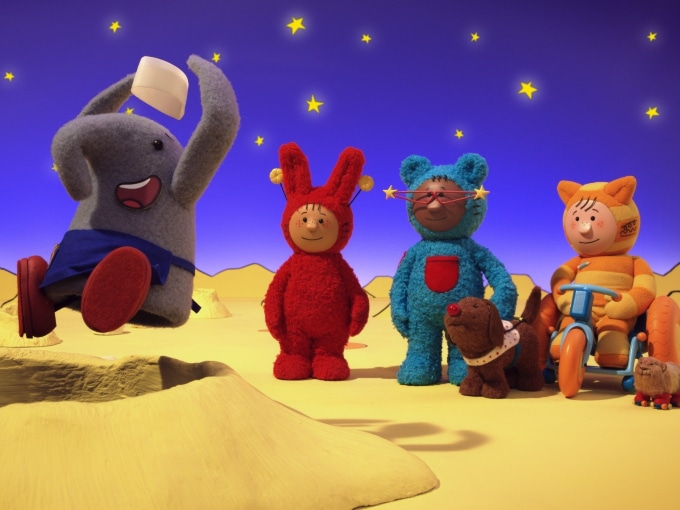by Brock Horning | November 2024
Could interactive media bring younger generations back to long-form TV shows and video?
Digital-native generations never got used to being passive viewers. With gaming and social media already a constant in children’s lives, the likes of YouTube and TikTok are replacing longer-form TV programming.
So what is the answer for the children’s entertainment industry? To compliment our recent feature in Kidscreen – the kids entertainment industry magazine – we’re exploring how interactive kids media is re-energizing content producers around new and innovative ideas.
What are kids watching nowadays?
There’s no doubt that kids TV faces a challenge – how to compete with an increasingly competitive media landscape. While broadcast TV remains popular among 4-15 year olds, the number of children turning to other platforms has been increasing every year. Ofcom summed it up succinctly in their 2024 report:
“Most children … say they prefer to watch video content on social media rather than watching shows and films on TV.” (Children and parents: media use and attitudes report 2024)
Loud and attention-grabbing videos on social media platforms are winning out over longer-form content. Children even reported preferring short snippets or compilations of film or TV show clips to the whole program or film itself.
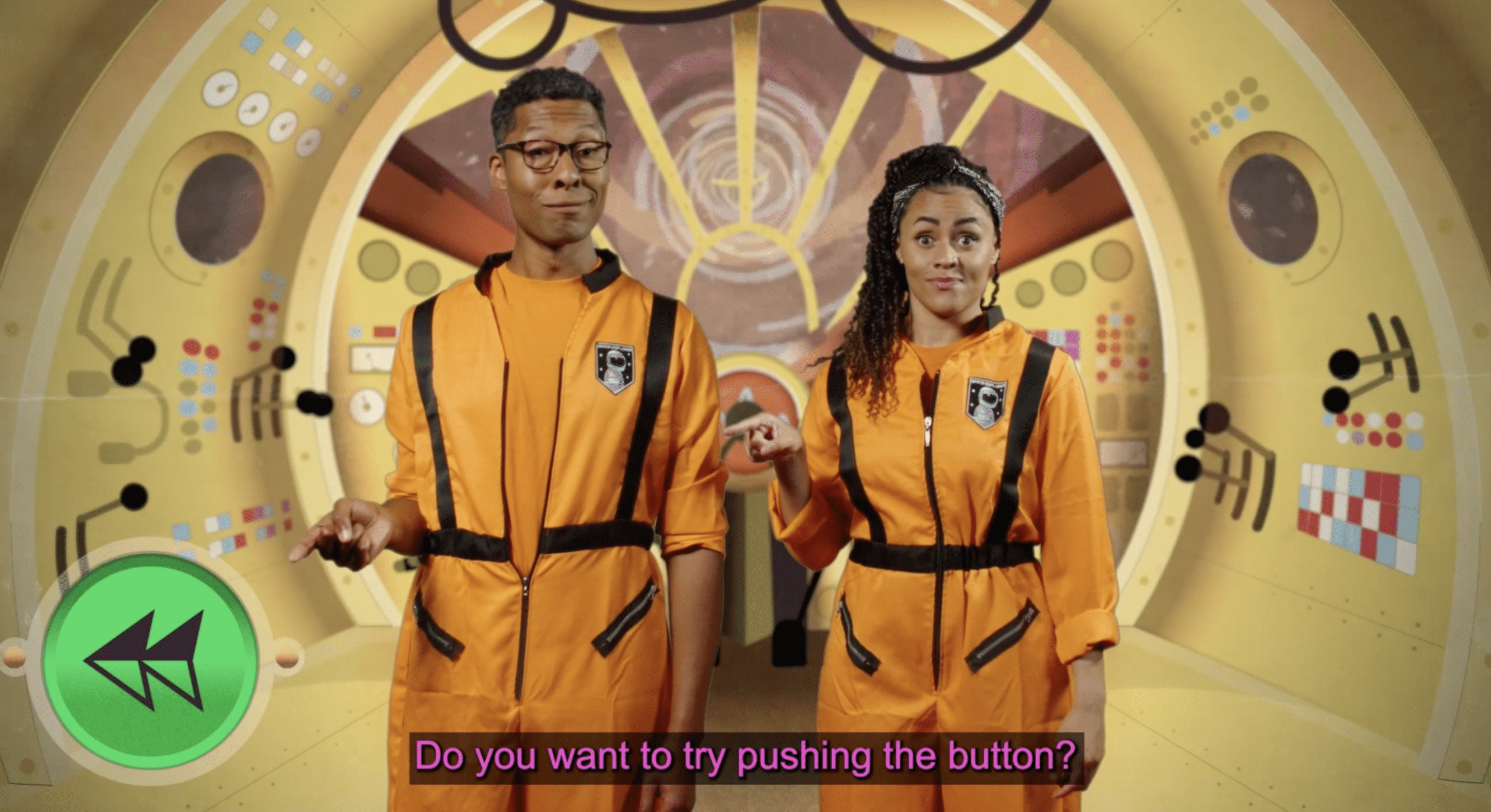
An interactive moment in The Egg’s Interactive Learning Portal
So what can content producers do to recapture attention?
The move to online video platforms suggests children are after a more active viewing experience. As Kidscreen’s Ryan Tuchow says: “viewers want to control how they consume content, whether it’s a series or an ad.” A digital-native generation will always expect to be in control of the viewing experience.
Interactivity can be a game-changer for broadcasters and streamers. Interactive kids TV offers control to the viewer while maintaining a long-form storyline. It lets viewers participate in the story rather than handing it over to the dark arts of an algorithm.
There are many forms that this approach could take. To demonstrate, we’ve rounded up six of our favorite examples – every single one of these projects was made using Stornway.io.
Who’s leading the way in interactive kids content?
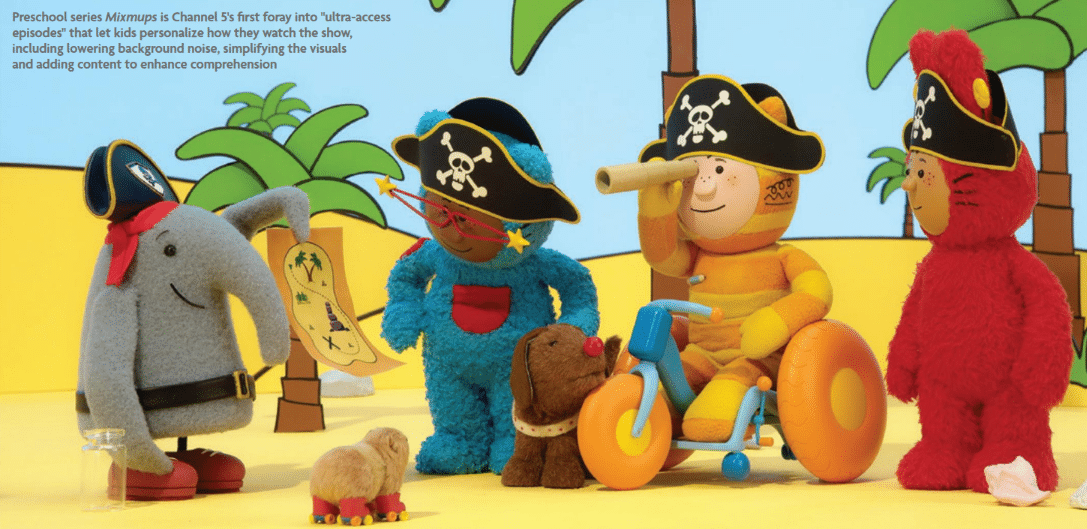
A still from Channel 5’s Mixmups
Mixmups: making ‘ultra-accessible’ episodes
To make TV shows accessible, linear programming has traditionally been limited to subtitles, audio description and British Sign Language. Interactive kids TV is expanding the possibilities.
This will begin with Channel 5’s Mixmups, a stop-motion series about friends who imagine various pretend-play scenarios such as having a machine that grants wishes. Two of the show’s main characters have visible disabilities, while a third has anxiety.
To reach everyone, Channel 5 has added further options to let children personalize their experience. Sign-language options, adjusting sound levels, simplified visuals and additional content that will help kids access TV shows on their own terms.
Gym Stars: focusing on what audiences are there for
Rather than simply splitting episodes up for social clips, the team behind Gym Stars turned their linear episodes interactive.
CBBC’s Gym Stars follows the lives of young UK gymnasts through training and competitions. It’s a widely popular show however, research highlighted that different audiences were interested in different program elements. Drummer TV decided to reimagine linear episodes by turning them interactive.
Using existing footage, Drummer TV let audiences choose what they wanted to see next at set points throughout each episode. Viewers could focus on competitions and gymnastic skills or see more of the gymnast’s relationships as they navigate friendships and romances.
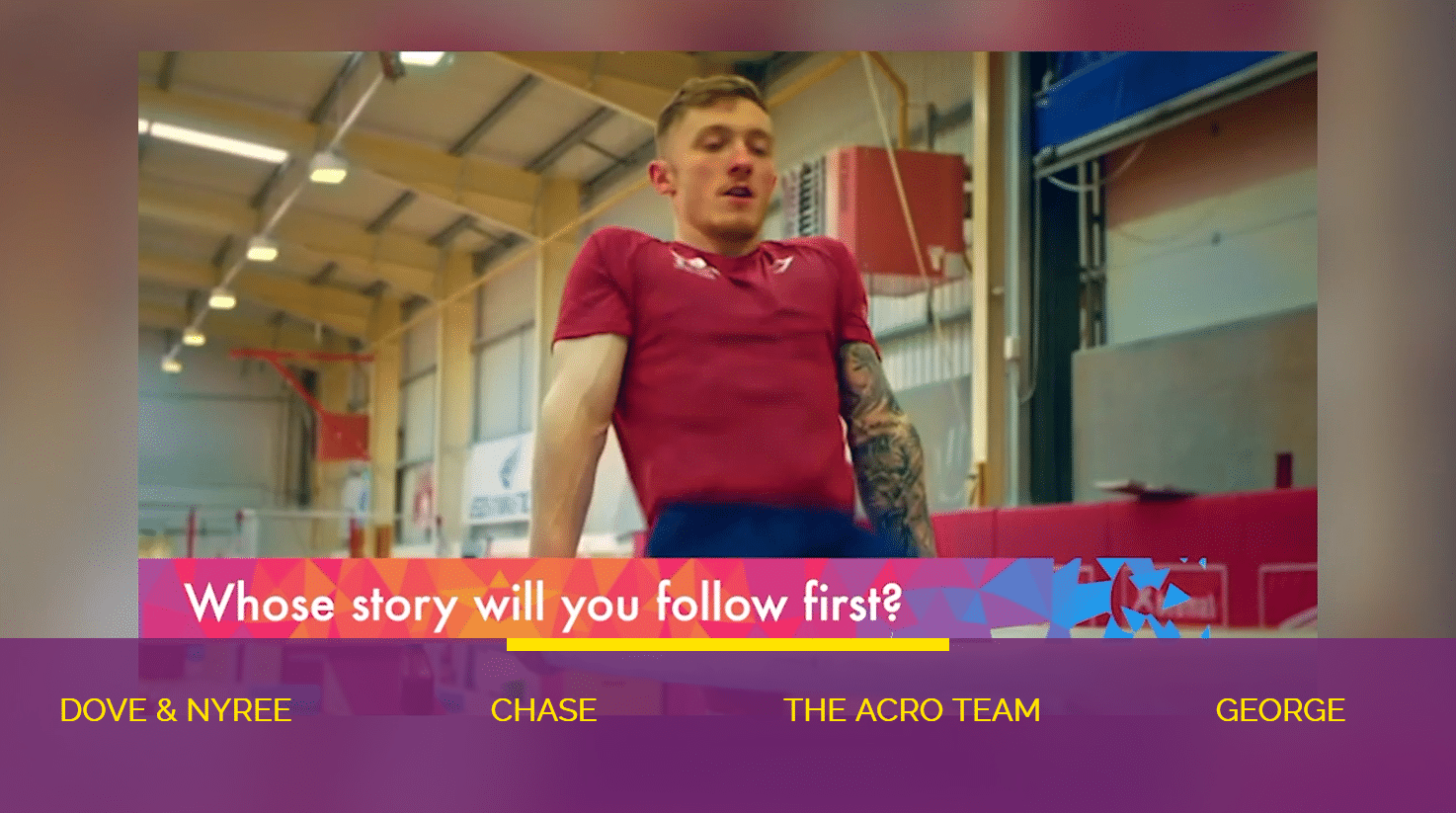
Time to decide. A decision moment during Gym Stars
Illustrated text: making classical education more engaging
Educational programs and linear learning are finding it harder to engage younger audiences. Illuminated Text offers a new and exciting way to teach classic subjects like the works of Shakespeare.
Illuminated Text is a deep dive into Shakespeare’s ‘Hamlet’. It looks at Shakespeare’s mastery of the written word through the lenses of rhetoric, imagery, sound, and rhythm, brought together with graffiti-style calligraphy. The creators wanted people to be “motivated to by their own curiosity” and let audiences explore at will.
The best learning doesn’t feel like learning. Educational kids programs can struggle to engage audiences with a rigid structures and dry tone. Illuminated Text shows a new (and interactive) way forward.
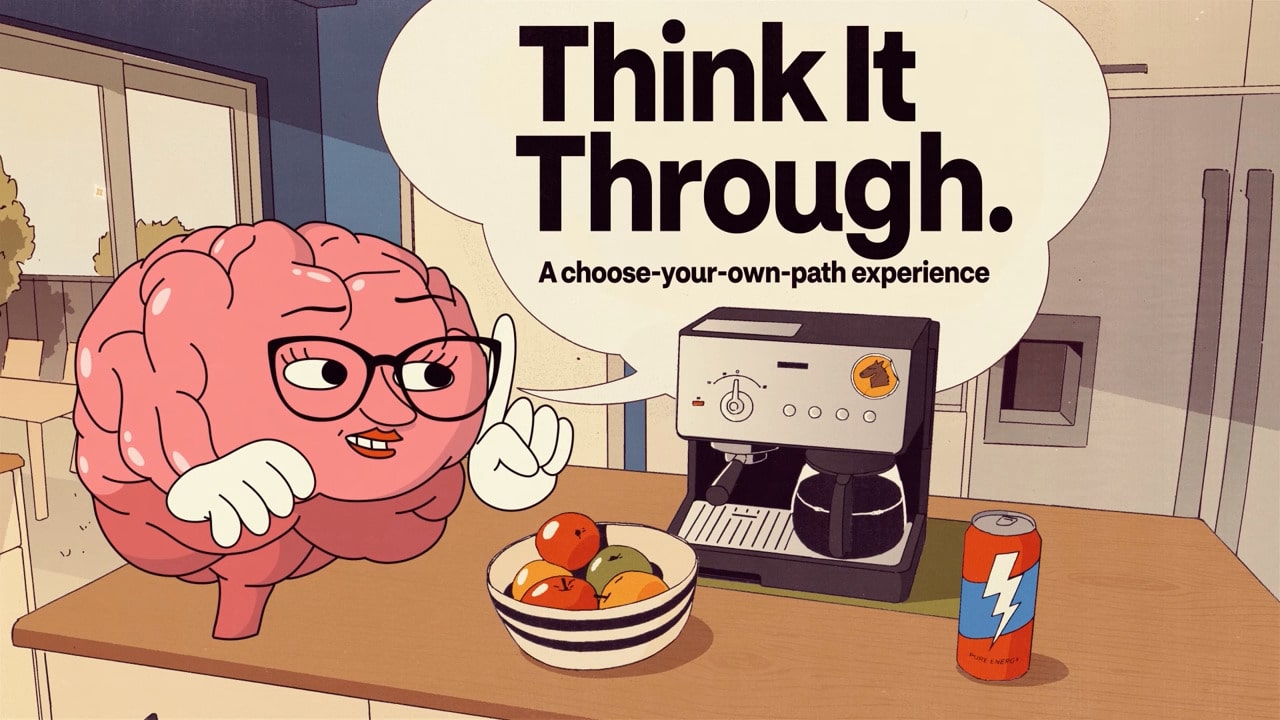
The title screen for Think It Through by Discovery Education and CVS Health
Think It Through: simulating real scenarios for social awareness
How do you effectively engage high school students in a topic as serious as prescription drug misuse? Discovery Education demonstrated how interactive video can show students the consequences of their decisions.
Think It Through takes students through realistic scenarios they might encounter during a typical school day and asks them to decide what to do at key decision points. Viewers get to see the consequences of their decisions, the impact on their body systems, and realize that one bad decision doesn’t have to lead to another.
Josephine Baker Interactive Learning Portal: adding depth to current learning modules
To add further detail and understanding to their interactive theatre show about Josephine Baker – the dancer turned activist – The Egg theatre company created a digital learning portal.
Brushing aside the traditional A4 teacher’s resource pack, this trilingual, interactive portal is played in the classroom before and after a live show. What The Egg understood was that children don’t want to be lectured – they want more control to explore at their own pace.
Interactivity proved to be the perfect way to engage students. Learning without realizing that they are learning at all.
Safari 360: providing new perspectives
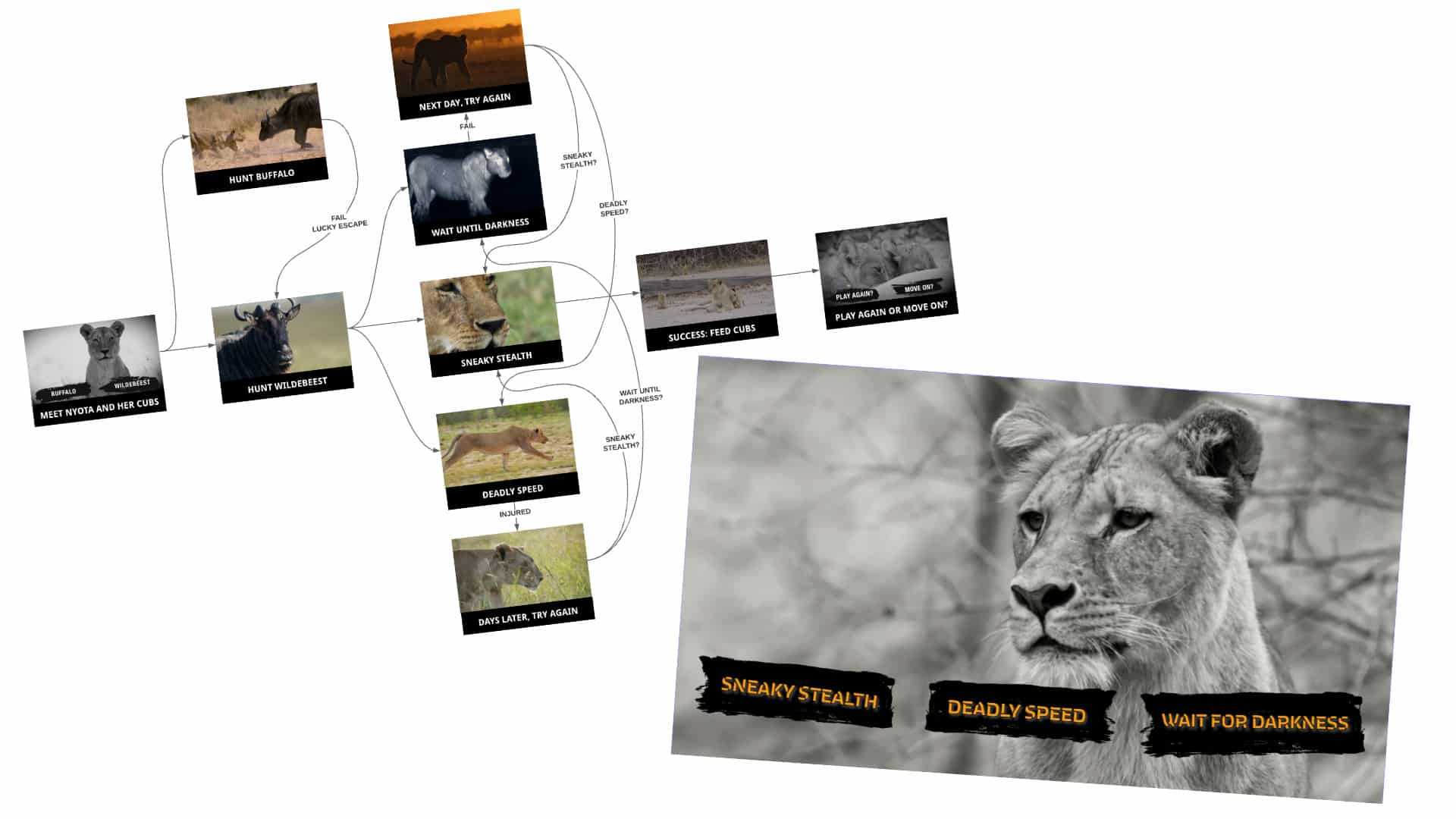
A decision screen and story map from Plimsoll Production’s Safari 360
How do you create an emotional connection between TV show and audience? By letting viewers make decisions for on-screen characters and witness the consequences. Plimsoll Productions brilliantly brought this concept into the kids nature documentary format.
In 360 Safari, viewers could help different animal survive out in the wild. For example, lioness Nyota must make choices about how to defend and feed her cubs. The audience can’t help but be fully engaged with the stakes so high.
Bonus: Thomas the Tank Engine Audiobook Fansite: bring everything together
Fun activities and extra content like books, merchandise or music are a common feature of popular children’s entertainment. Bring it all together with the show itself as one seamless experience – whichever platform each element is hosted on.
This bonus example was created by the team within Stornaway to show the opportunities within our sparkly new feature, Voyager. A fully interactive experience to elevate engagement.
How Stornaway can help
Interactivity can help re-engage children and students. Give your audience more choice and let them be a part of the story, and you’ll be rewarded with higher engagement.
The Stornaway platform gives content producers everything they need to create engaging and exciting interactive content – even for those working on tight budgets. The drag-and-drop interface requires no coding or programming knowledge and can be used to quickly create interactive project using pre-designed templates or from scratch.

